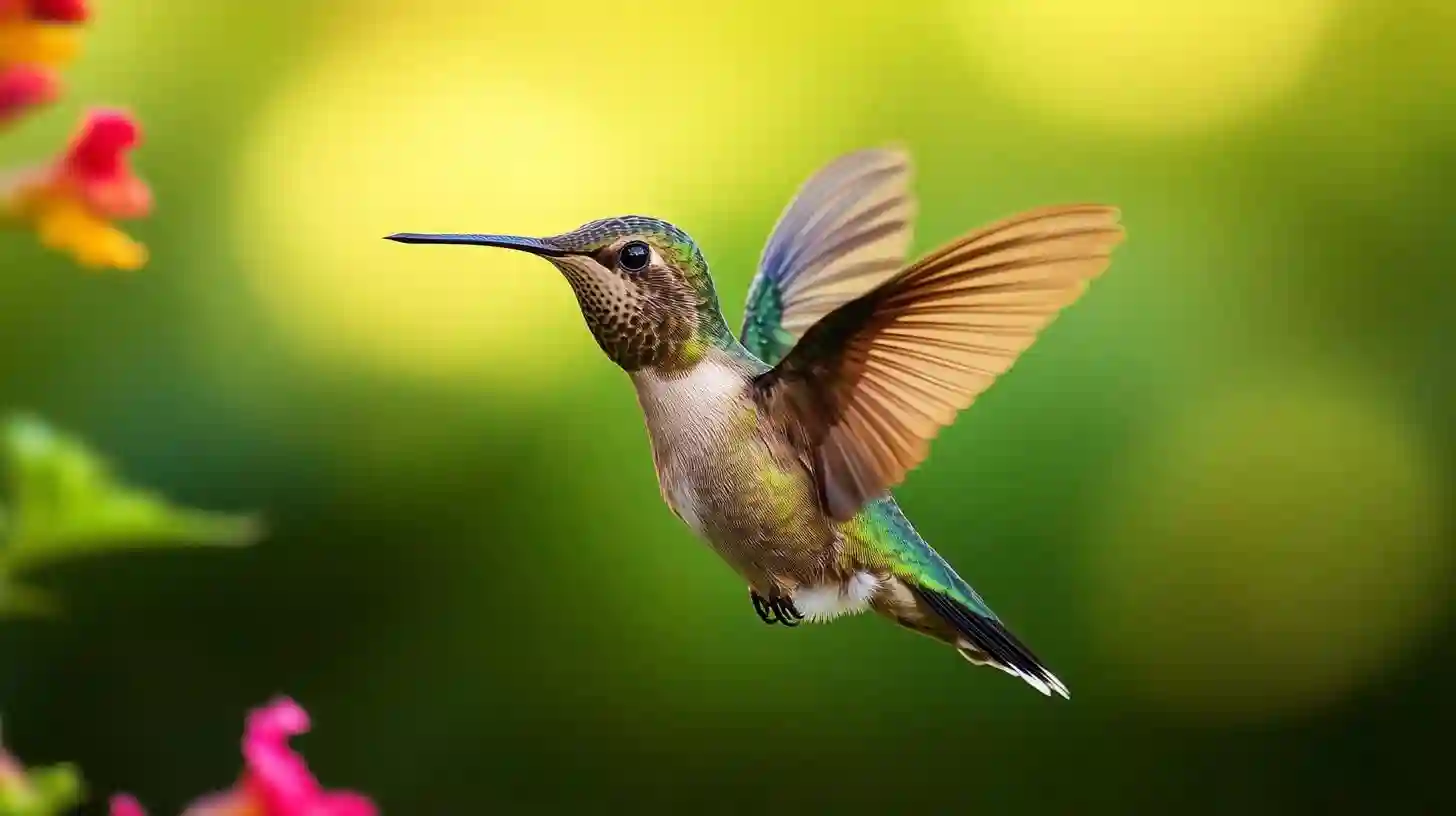
Hummingbirds are among the most captivating creatures in the avian world, known for their vibrant plumage, incredible flying abilities, and unique behaviors. These tiny birds belong to the family Trochilidae, with over three hundred species spread across the Americas, primarily in Central and South America. Their diminutive size does not hinder them from being significant players in various ecosystems, as they play crucial roles in pollination and seed dispersal. A closer examination of their fascinating life reveals a world of adaptability and specialized skills that few other birds possess.
One of the most remarkable features of hummingbirds is their exceptional flying abilities. They are the only birds capable of hovering in mid-air, a feat achieved by rapidly flapping their wings, usually about fifty times per second. This extraordinary wing movement allows them to maintain a stationary position while feeding on nectar. Their flight mechanics are further enhanced by their unique ball-and-socket joint at the shoulder, which provides them with remarkable agility. Hummingbirds can fly forwards, backwards, and even upside down. This versatility in movement not only aids in accessing flowers but also helps them evade predators.
Their diet primarily consists of nectar sourced from various flowering plants, which provides them with essential sugars for energy. In addition to nectar, hummingbirds consume insects and spiders to meet their protein requirements, feeding on larvae and small invertebrates that contribute to a balanced diet. This opportunistic feeding behavior has evolved alongside their unique tongue structure, which acts much like a straw, allowing them to lap up nectar with precision. Some species even have the ability to extend their tongues to great lengths, making it easier for them to reach nectar hidden deep within tubular flowers.
Hummingbirds are also known for their incredible metabolism, which is one of the highest among all animals. To sustain their high-energy lifestyle, these birds need to consume large quantities of food relative to their body weight. A single hummingbird may visit hundreds of flowers in a day, often returning to favored feeding spots regularly. This dependency on nectar-rich plants leads to a symbiotic relationship where hummingbirds assist in pollination. As they move from flower to flower, their heads and bodies transfer pollen, facilitating the reproduction of various plant species. This relationship showcases the interconnectedness of ecosystems, highlighting how a small bird can significantly impact plant life.
The behaviors of hummingbirds extend beyond feeding; their social interactions can be intricate and competitive. Males often establish territories around abundant food sources, defending them vigorously from rivals. Displays of aerial acrobatics, aggressive dives, and vocalizations help assert dominance and attract potential mates. During the courtship ritual, male hummingbirds perform elaborate displays involving intricate flights that showcase their physical prowess. Colorful plumage, particularly iridescence, serves not only to dazzle potential mates but also serves as a signal of health and vigor.
As breeding season approaches, female hummingbirds take on the sole responsibility for nest building, egg laying, and chick rearing. Nests are typically small structures made from plant fibers, spider silk, and other natural materials, skillfully camouflaged in their surroundings. After laying two tiny eggs, the female incubates them, relying solely on her instincts and energy reserves. Once the chicks hatch, they are entirely dependent on their mother for food and protection. The female continues to feed her growing chicks until they are ready to fledge, showcasing the strength and dedication seen in avian mothers.
Hummingbird migration is another fascinating aspect of their life cycle. Many species undertake significant journeys between breeding and wintering grounds, often traveling thousands of miles. The Ruby-throated Hummingbird, for instance, migrates from North America to Central America, navigating vast distances with remarkable precision. Migration typically coincides with the flowering seasons, ensuring a steady food supply. Birds use natural cues such as the position of the sun, magnetic fields, and geographic landmarks to guide their migration, demonstrating exceptional navigation skills.
As humans, we can promote the coexistence of these remarkable birds by creating hummingbird-friendly environments. Planting native flowers that produce nectar and providing proper feeding stations can help nourish local hummingbird populations. Maintaining pesticide-free gardens is equally important, as chemicals can pose serious threats to these delicate creatures. By understanding and respecting the ecological roles of hummingbirds, we not only enjoy their beauty and presence but also contribute to the preservation of the diverse ecosystems they inhabit. Engaging in hummingbird-friendly practices connects people to nature, fostering a deeper appreciation for one of nature's most enchanting marvels.